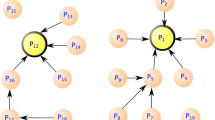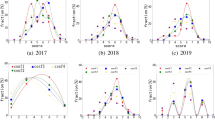Abstract
The importance and the need for the peer-review system is highly debated in the academic community, and recently there has been a growing consensus to completely get rid of it. This is one of the steps in the publication pipeline that usually requires the publishing house to invest a significant portion of their budget in order to ensure quality editing and reviewing of the submissions received. Therefore, a very pertinent question is if at all such investments are worth making. To answer this question, in this paper, we perform a rigorous measurement study on a massive dataset (29k papers with 70k distinct review reports) to unfold the detailed characteristics of the peer-review process considering the three most important entities of this process—(i) the paper (ii) the authors and (iii) the referees and thereby identify different factors related to these three entities which can be leveraged to predict the long-term impact of a submitted paper. These features when plugged into a regression model achieve a high \(R^2\) of 0.85 and RMSE of 0.39. Analysis of feature importance indicates that reviewer- and author-related features are most indicative of long-term impact of a paper. We believe that our framework could definitely be utilized in assisting editors to decide the fate of a paper.
















Similar content being viewed by others
References
Ingelfinger, F.J.: Peer review in biomedical publication. Am. J. Med. 56(5), 686–692 (1974)
Relman, A.S., Angell, M.: How good is peer review? N. Engl. J. Med. 321(12), 827–829 (1989)
Smith, R.: Peer review: a flawed process at the heart of science and journals. J. R. Soc. Med. 99(4), 178–182 (2006)
Cole, S., Simon, G.A., et al.: Chance and consensus in peer review. Science 214(4523), 881–886 (1981)
Braatz, R.D.: Papers receive more citations after rejection [publication activities]. Control Syst. IEEE 34(4), 22–23 (2014)
Sikdar, S., Marsili, M., Ganguly, N., Mukherjee, A.: Influence of reviewer interaction network on long-term citations: a case study of the scientific peer-review system of the journal of high energy physics. In: 2017 ACM/IEEE Joint Conference on Digital Libraries (JCDL), pp. 1–10 (2017)
Kassirer, J.P., Campion, E.W.: Peer review: crude and understudied, but indispensable. JAMA 272(2), 96–97 (1994)
Lee, C.J., Sugimoto, C.R., Zhang, G., Cronin, B.: Bias in peer review. JASIST 64(1), 2–17 (2013)
McNutt, R.A., Evans, A.T., Fletcher, R.H., Fletcher, S.W.: The effects of blinding on the quality of peer review: a randomized trial. JAMA 263(10), 1371–1376 (1990)
Bjork, B., Roos, A., Lauri, M.: Scientific journal publishing: yearly volume and open access availability. Inf. Res. Int. Electron. J. 14(1), 1–14 (2009)
Craig, L.: Improving peer review. Bull Ecol Soc Am 69(2), 109–111 (1988)
Rodriguez, M.A., Bollen, J.: An algorithm to determine peer-reviewers. In: Proceedings of the 17th ACM Conference on Information and Knowledge Management, pp. 319–328. ACM (2008)
Rodriguez, M.A., Bollen, J., Van de Sompel, H.: Mapping the bid behavior of conference referees. J. Inform. 1(1), 68–82 (2007)
Mimno, D., McCallum, A.: Expertise modeling for matching papers with reviewers. In: Proceedings of the 13th ACM SIGKDD International Conference on Knowledge Discovery and Data Mining, pp. 500–509. ACM (2007)
Yan, R., Huang, C., Tang, J., Zhang, Y., Li, X.: To better stand on the shoulder of giants. In: Proceedings of the 12th ACM/IEEE-CS Joint Conference on Digital Libraries, pp. 51–60. ACM (2012)
Coupé, T.: Peer review versus citations-an analysis of best paper prizes. Res. Policy 42(1), 295–301 (2013)
Kim, S.-M., Pantel, P., Chklovski, T., Pennacchiotti, M.: Automatically assessing review helpfulness. In: EMNLP, pp. 423–430. Association for Computational Linguistics (2006)
Ghose, A., Ipeirotis, P.G.: Estimating the helpfulness and economic impact of product reviews: mining text and reviewer characteristics. TKDD 23(10), 1498–1512 (2011)
Chakraborty, T., Kumar, S., Goyal, P., Ganguly, N., Mukherjee, A.: Towards a stratified learning approach to predict future citation counts. In: Proceedings of the 14th ACM/IEEE-CS Joint Conference on Digital Libraries, pp. 351–360. IEEE Press (2014)
Montejo-Ráez, A., Martínez-Cámara, E., Martin-Valdivia, M.T., Urena-Lopez, L.A.: Random walk weighting over sentiwordnet for sentiment polarity detection on twitter. In: WASSA (2012)
Pennebaker, J.W., Chung, C.K., Ireland, M., Gonzales, A., Booth, R.J.: The development and psychometric properties of LIWC2007 (2007)
Sikdar, S., Marsili, M., Ganguly, N., Mukherjee, A.: Anomalies in the peer-review system: A case study of the journal of high energy physics. In: Proceedings of the 25th ACM International on Conference on Information and Knowledge Management, pp. 2245–2250. ACM (2016)
Smola, A.J., Schölkopf, B.: A tutorial on support vector regression. Stat. Comput. 14(3), 199–222 (2004)
Acknowledgements
We would like to thank the publishing team of JHEP for providing us the data and they were the only people willing to share.
Author information
Authors and Affiliations
Corresponding author
Rights and permissions
About this article
Cite this article
Sikdar, S., Tehria, P., Marsili, M. et al. On the effectiveness of the scientific peer-review system: a case study of the Journal of High Energy Physics. Int J Digit Libr 21, 93–107 (2020). https://doi.org/10.1007/s00799-018-0247-9
Received:
Revised:
Accepted:
Published:
Issue Date:
DOI: https://doi.org/10.1007/s00799-018-0247-9




